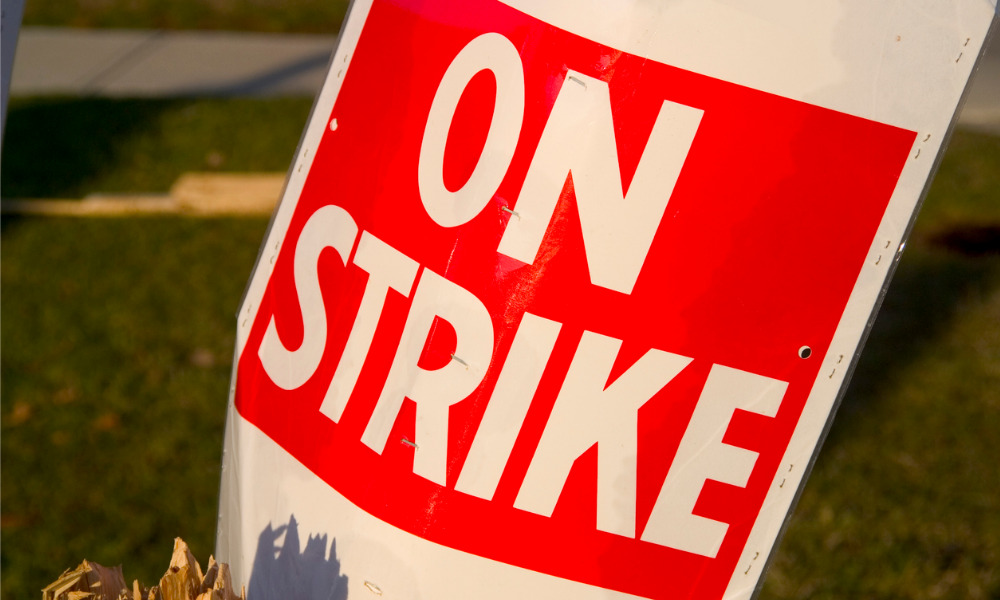
'An achievement of generations of labour struggle,' says lawyer

This article is part of a series addressing popular topics and questions clients and the public may have about the legal profession.
Collective bargaining is a standard process for workers and bosses to negotiate their working relationships and is a hard-fought gain of the labour movement.
Without a trade union, workers negotiate employment contracts with their bosses individually. Through collective bargaining, trade unions and management develop collective agreements that determine employment terms for all the union’s members. While collective agreements deal with wages, benefits, and vacation, they can also provide protection against unjust discipline and layoffs and dictate rules around job postings and promotions, says Joshua Mandryk, a lawyer at Goldblatt Partners LLP.
“Collective bargaining is an achievement of generations of labour struggle,” he says. “The benefits that folks enjoy today are the fruits of those past struggles… Collective bargaining has had a positive impact on all workers.”
“Collective bargaining provides for workplace democracy, and it gives working people a collective voice at work… Workers are stronger together, and they can improve their working conditions and their livelihood, and indeed make broader social gains when they collectively bargain together.”
According to Statistics Canada, about 31 per cent of Canadian workers are in a union. Membership varies widely across industries. Only 4.9 per cent of accommodation and food services workforce is unionized, while that number is 74.2 per cent for those working in education.
Over the years, Canada has institutionalized the right of workers to form and join a union, said the Canadian Labour Congress. In 1972, Canada ratified the International Labour Organization (ILO) Convention 87, which obliges signatories to ensure workers are free to join a union without any influence from the authorities. Then in 2017, Canada ratified the ILO’s Right to Organize and Collective Bargaining Convention. “One of the most significant gains,” said the CLC, occurred in 2015, when two court decisions provided the basis that the right to collective bargaining is protected by the Charter guarantee of freedom of association.
From air-traffic controllers and corrections officers to lawyers, border agents and RCMP officers, collective agreements govern the employment relationships of most public-sector workers. According to Statistics Canada, the public sector has a union-membership rate of 77.2 per cent.
The Government of Canada FAQ on collective bargaining in public administration details the rules for the 200,500 employees in more than 80 departments who make up the “core public administration” employed by the Treasury Board.
According to the FAQ, not every condition of employment can be negotiated in collective bargaining. The Public Service Labour Relations Act restricts negotiations concerning staffing and pensions. That is because a collective agreement cannot “directly or indirectly, establish, alter or eliminate any term or condition of employment,” if doing so would entail enacting or amending legislation – aside from appropriation of money – or the term or condition has or could be established by the Public Service Employment Act, the Public Service Superannuation Act or the Government Employees Compensation Act.
Parties iron out differences at the bargaining table, where each party presents their proposed amendments, deletions or additions to the collective agreement, said the FAQ. If there is an impasse, the Public Service Labour Relations Board (PSLRB) chairperson can appoint a mediator, which will aid discussion and assist in settling the dispute. If the mediation cannot reach a solution, either party can request arbitration or conciliation.
Arbitration is also used when 80 per cent or more of the bargaining unit positions have been designated essential. The PSLRB forms an arbitration board, which makes a binding arbitral award. The award is incorporated into the new collective agreement. Likewise, if either party requests conciliation, the PSLRB will establish a public interest commission, which will assist them in solving the dispute. Whether the parties reach an agreement or not, the commission will issue a public report to the PSLRB on its findings and recommendations. The findings are binding if both parties agree to that before the issuance of the report.
Suppose the public interest report and recommendations fail to produce an agreement. In that case, the bargaining agent can authorize a strike, provided seven days have passed since the parties got the report, and it has not been more than sixty days since a strike vote was conducted.
But if the parties reach an agreement, the department’s employers seek authority from the president of the Treasury Board to enter into an agreement with the bargaining agent. In some cases, a tentative agreement must be sent to the affected bargaining unit’s members for a ratification vote. A negative result will lead to a resumption of the collective bargaining process.